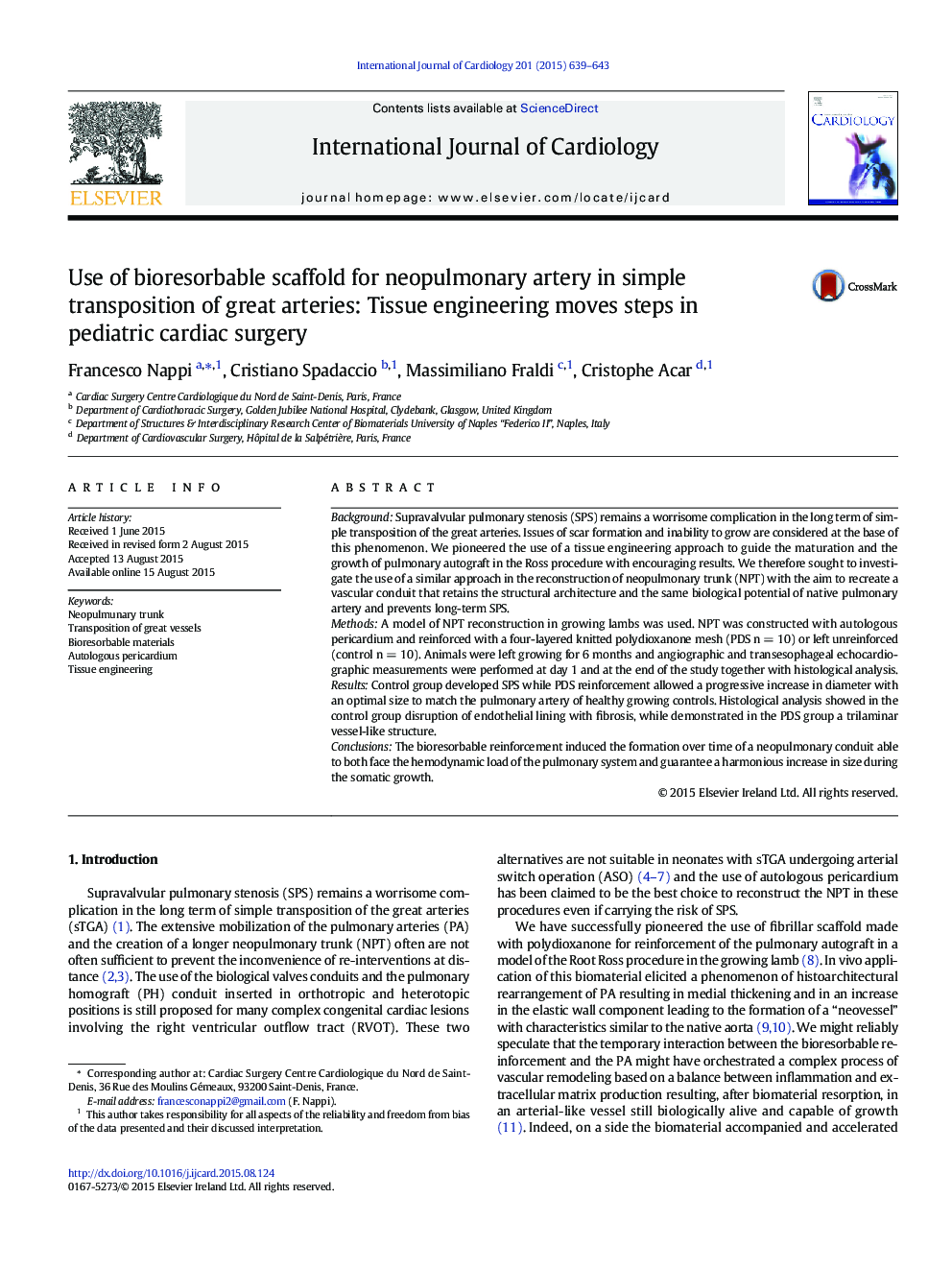| کد مقاله | کد نشریه | سال انتشار | مقاله انگلیسی | نسخه تمام متن |
|---|---|---|---|---|
| 5966386 | 1576150 | 2015 | 5 صفحه PDF | دانلود رایگان |
BackgroundSupravalvular pulmonary stenosis (SPS) remains a worrisome complication in the long term of simple transposition of the great arteries. Issues of scar formation and inability to grow are considered at the base of this phenomenon. We pioneered the use of a tissue engineering approach to guide the maturation and the growth of pulmonary autograft in the Ross procedure with encouraging results. We therefore sought to investigate the use of a similar approach in the reconstruction of neopulmonary trunk (NPT) with the aim to recreate a vascular conduit that retains the structural architecture and the same biological potential of native pulmonary artery and prevents long-term SPS.MethodsA model of NPT reconstruction in growing lambs was used. NPT was constructed with autologous pericardium and reinforced with a four-layered knitted polydioxanone mesh (PDS n = 10) or left unreinforced (control n = 10). Animals were left growing for 6 months and angiographic and transesophageal echocardiographic measurements were performed at day 1 and at the end of the study together with histological analysis.ResultsControl group developed SPS while PDS reinforcement allowed a progressive increase in diameter with an optimal size to match the pulmonary artery of healthy growing controls. Histological analysis showed in the control group disruption of endothelial lining with fibrosis, while demonstrated in the PDS group a trilaminar vessel-like structure.ConclusionsThe bioresorbable reinforcement induced the formation over time of a neopulmonary conduit able to both face the hemodynamic load of the pulmonary system and guarantee a harmonious increase in size during the somatic growth.
Journal: International Journal of Cardiology - Volume 201, 15 December 2015, Pages 639-643
